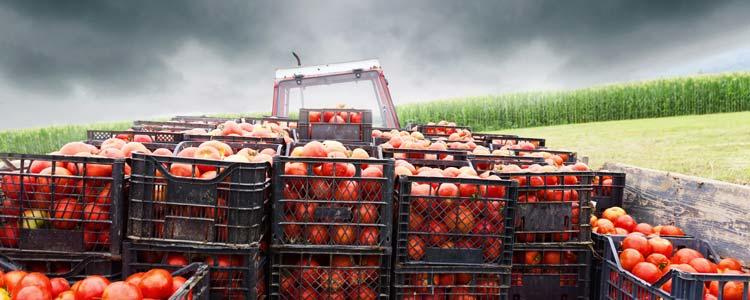All aspects of agriculture, including manufacturers, are under scrutiny as consumers focus on how we create the products in our food supply chain. While sustainability started out as a synonym for ‘environment’ and ‘green’, those days have passed. Today, businesses that use sustainability assessment to better manage their bottom line see positive results.
For example, a new global consumer study from Unilever reveals a market opportunity of more than $1 trillion for brands that effectively market the sustainability of their products. In fact, consumer preferences are already providing growth opportunities for Unilever’s Sustainable Living Brands. Almost half of Unilever’s 2015 growth came from its sustainable living brands, which grew 30 percent faster than the rest of the company’s business.
The agriculture industry, from farm to table, has massive opportunities in sustainability. As an equipment manufacturer, you are a vital partner that can deliver solutions to meet consumer expectations for our industry – while running your business with sustainability at its core.
Think of sustainability as your “triple bottom line”: financial, social, and environmental. You’d never be able to manage profitability without knowing where you stand – how can you manage your business growth strategy and profitability without knowing where you stand on input costs, employees and resource use? The old adage, “You cannot manage what you do not measure,” has never been truer!
The challenge can be securing sustainability opportunities and planning accordingly for them. Sustainability used to be just about cost-cutting, internal controls, and best management practices. Now, it’s quickly becoming a key risk management strategy, both to defend market position and gain market share. No matter what level of engagement you want to start with, you’ll gain maximum value from your sustainability efforts if you approach your “triple bottom line” with a step-by-step process. Follow these three steps to success:
- Know where you stand. You’re using a lot of data to run your business today. But it needs to be organized to reflect the value of your sustainability initiatives. Establish a framework – decide what is most important to track – then, leverage existing business data to know where you stand. This includes understanding your suppliers and where they stand on sustainability. Beyond environmental conditions, like waste, water use, or energy efficiency, how are you (and your suppliers) working towards social responsibility, like worker safety and health, community engagement, and economic opportunity? Knowing these aspects of your business, and the businesses you depend on to deliver your products, puts you on the track to success.
- Set goals and targets. Once you’ve reviewed your framework results, set realistic goals and targets. Think of it in terms of continuous improvement, with goals specific to your business and flexible to the outcomes you want. Sometimes, your goals might be to reduce your use of resources, like water or natural gas, but they can also require you to consider tradeoffs. For example, as your business grows, how will you manage water or energy use as your overall footprint increases over time? What efficiencies can you make without compromising product quality and integrity? How does employee training and your company values relate to your environmental goals and targets? These decisions are not easy to make, and just like managing your financial bottom-line, your choices can never be static.
- Share your results. Given the scrutiny that all businesses face, sharing your results – whether positive or negative – shows that you are serious about how you run your business and that you are committed to continuous improvement. Context is extremely important when you discuss your sustainability results. For example, if you have a goal for zero waste, and you don’t meet that goal (for whatever reason), explain in your sustainability report what is going on in your business and how you will reset your plans to hit a new target.
Sustainability is complex, and it takes time and effort. Going step-by-step is best, so your company can focus on which sustainability initiatives are most relevant and appropriate, while always keeping your potential market value in mind. Discovering what you are already managing in your business and connecting your information with key metrics for manufacturers is an important first step. By having your business outcomes in mind from the beginning of the process, you can tap into the market potential that is bound to come from communicating your sustainability results.
Once you begin to measure and report your sustainability, the next step in your journey becomes exploring how to use sustainability to your advantage. Consider ways you can use sustainability initiatives to increase sales distribution, grow customer relationships, expand volumes, or improve your brand loyalty! Sustainability can have a positive, growth-related impact no matter where your company sits in the supply chain.
Unilever’s study shows that these outcomes have never been more real. As of 2014, 77% of US consumers ranked sustainability high on their list of criteria when deciding what to buy. By 2015, 91% said they have a more positive image, 87% said they have more trust, and 87% said they show greater loyalty toward companies that support sustainability issues. That is almost a 20% increase in one year! By actively engaging in sustainability initiatives now, you’ll be on track to secure greater visibility with your customers, your suppliers, and ultimately, consumers who value transparency and want to build trust with our industry.
The Unilever consumer study reflects what leaders in companies already know: pursuing sustainability strategies that address economic, social, and environmental issues in concert leads to better outcomes for them, their suppliers, their farmer customers, and the consumers they serve.
So, want to see positive results in growth, profitability, and the longevity of your business? Get serious about sustainability and discover the power that comes with a balanced “triple bottom line.”
ABOUT THE AUTHORS
As leader of the K·Coe Isom Sustainability practice, Emily Johannes arms food and agricultural businesses with valuable tools, plans, and analysis to increase their credibility in the marketplace. K·Coe Isom Manufacturing practice leader Dave Burger develops creative solutions to business challenges for traditional and biofuels manufacturing companies. He guides businesses in seizing opportunities and avoiding mishaps as they evolve and grow. For more information, visit www.kcoe.com.
This article originally appeared in Ag Innovator, Spring 2017





